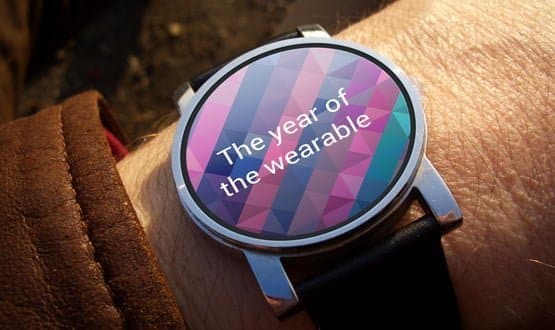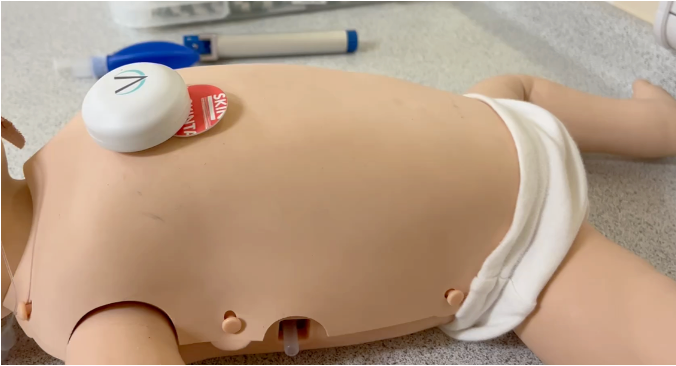The year of the wearable

When future generations of technology enthusiasts look back on 2014, they may well describe it as the year of the wearable.
The consumer devices have moved into popular conversation, with technology giants Microsoft, Apple and Google bringing their might to bear on the wearable devices market.
More significantly for those working in healthcare, the latest devices do far more than count steps or enable users to log calories and sleep; and they come ready to share their data through platforms such as HealthKit and HealthVault.
2014: the year it really started?
James Moar, a research analyst with Juniper Research, wrote a report in November assessing five-year trends and forecasts for the wearables market.
“In terms of general consumer wearables, it’s been a huge year – if you look at the gap between now and this time in 2013, there’s an ecosystem out there that just didn’t exist before,” he says.
Marko Balabanovic, a director at new technology and innovation organisation the Digital Catapult Centre, agrees, saying we are moving beyond the “early adopter” phase.
“I think it’s the beginning of a shift from niche activity for a self-selecting group of people interested in tracking themselves… to more mainstream applications,” he argues.
Even so, Balabanovic says there remains a gap in the market between devices for the “worried well” – those who can afford a tracking device and just want to keep on top of their health – and devices for patients with specific health conditions.
Moar argues the gap is there because manufacturers have chosen to focus on “wellness” rather than health and care because of the regulatory hoops associated with the latter. But he feels this is changing.
“Those looking into healthcare self-monitoring are increasingly looking at what kind of infrastructure they need to have in place, and what the regulatory consequences are.”
Apple bites into the market
Some of the companies with the clout to get over the hurdles have certainly dipped a toe into the wearables sector this year.
In September, Apple announced its much-anticipated smartwatch. The Apple Watch includes a heart rate sensor and accelerometer, and is underpinned by the company’s HealthKit development platform.
This comes with the ability to store around 60 different types of data, including blood pressure and glucose level, and to let users to share the data with those willing to take it.
Apple has already announced partnerships with American medical organisations, such as the non-profit medical practice The Mayo Group, and electronic patient record supplier Epic Systems.
This seems to foreshadow a move from fitness tracking to more clinically relevant information. In the UK, Emis Group is already using HealthKit to enable GPs to view patient-collected information without leaving its Emis Web system.
Big players take an interest
In October, Microsoft followed with iMicrosoft Band, a £125 device with ten sensors that track heart rate, calories, stress and even sun exposure.
And before either of these, Google revealed in March that it was developing Android Wear, a version of its popular Android operating system designed specifically for smartwatches and other wearable devices.
Microsoft already had a personal health record platform, HealthVault, which is used by at least two NHS trusts – University Hospital Southampton and London and Maudsley – as the foundation of information sharing services.
Moar says this puts the company in a strong position to move towards medical relevance with its wearables. On the other hand, he recognises that Apple’s sheer size and record as an innovator has focused attention on HealthKit.
“The way Apple does things, it’s a great educator and a great executor,” Moar says. “It takes a product and introduces it to people. If it can get behind wearables for health in the way its partnerships would suggest, it could educate vast number of people in the possibilities on offer.”
The economics of progress
The main issue with moving wearables into the healthcare space, Moar says, is not the technology but the cost of the devices themselves.
“A simple fitness tracker is very cheap and it’s not that much of an investment for the consumer,” he points out. “If you build a wearable that’s explicitly focussed on blood sugar levels, it becomes more expensive.
“At the same time, your market immediately shrinks down to diabetics, so the kind of volumes you’re going to sell are much reduced.”
Data privacy is also a concern. Wearables are able to collect data 24/7 and transmit it into data repositories, so there will be significant issues around who can access the information and what it can be used for; given the potential value of such data to health insurers – or even drugs manufacturers.
In use in the NHS, just not much
Despite the obstacles that still need to be overcome, a number of projects are starting to show how the NHS could benefit from giving wearable devices to patients. Trusts are experimenting with monitors in maternity and A&E units, and with conducting traditional nursing observations remotely.
In Poole, a consortium including Poole Hospital NHS Foundation Trust has received a £722,000 grant from Innovate UK for a project to integrate the personal health data of epilepsy patients with its EPR.
The project is based in part on using geolocation and automatic sensing technologies from wearable tech, such as an electronic bracelet, to sense changes in a patient’s condition and check on their status.
The North Staffordshire Combined Healthcare NHS Trust is using wearable cameras from Microsoft to act as an aid for people with memory loss, allowing them to take regular photos and then upload them onto smartphones or other devices in the evening.
And in America, the Michael J Fox Foundation has partnered with Intel on a project using smartwatches to track the physical symptoms of Parkinson’s disease sufferers and determine how they respond to different medications.
A developing country market?
Moar believes 2015 will see increased adoption of devices for self-monitoring, with wearable heart monitors and wearables for diabetics two areas with great potential.
Balabanovic says this will bring the value of personal health data to the fore, with companies battling to win people’s trust – and their valuable information.
“In terms of the storing and control and processing of personal health data, that will be an interesting battle. You will see more organisations trying to make that their job,” he says.
However, Moar feels that developing countries, such as India and China, may be where healthcare wearables really take off, because of the tension between rising GDP levels – and with them both a rising expectation of health and a rising burden of disease – and poor healthcare facilities.
“Their GDP levels are rising hand in hand with rates of ‘Western diseases’, metabolic concerns like obesity, diabetes. What we have is an increasingly wealthy population getting problems and not having the infrastructure to support it.”
The mobile infrastructure of developing countries tends to be relatively well-developed, making remote healthcare services a more viable proposition, Moar argues. At the same time, population levels means there is “a larger playground to work with” for wearables manufacturers.
Whatever happens, the “year of the wearable” has ensured that the devices are sure to be part of the healthcare landscape over the coming twelve months.




